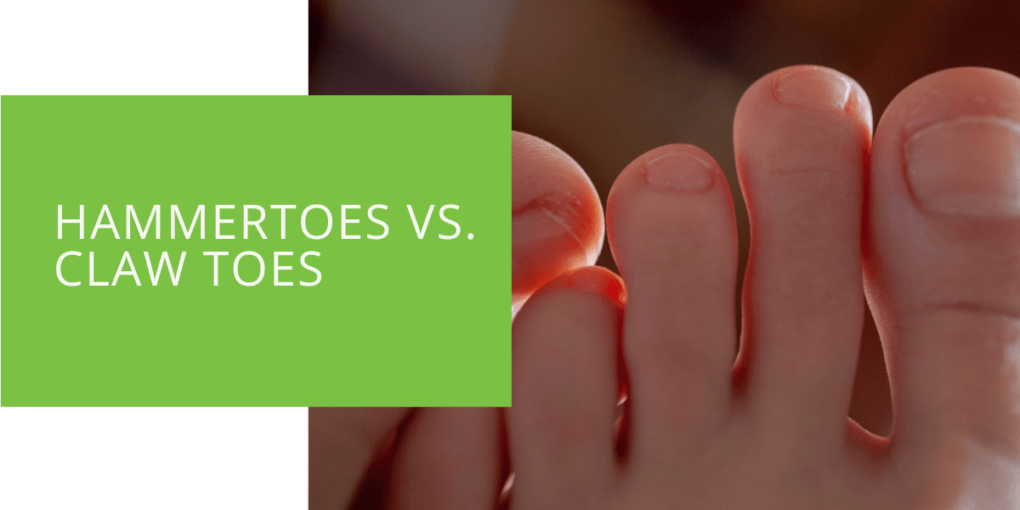Hammertoes vs. Claw Toes
If you have noticed a deformity in your toes, you may wonder if you have a hammertoe or a claw toe. These foot conditions are common and can cause pain and discomfort, especially when wearing shoes.
Understanding the differences between the two is important to address the issue and find relief properly. This article will explore the definitions, causes, symptoms, and treatment options for hammertoes and claw toes. We will also discuss ways to prevent these conditions from developing or worsening.
What are Hammertoes and Claw Toes?
Definition of Hammertoes
A hammertoe is a deformity that causes one or more of the smaller toes to bend downward at the middle joint, giving the appearance of a hammerhead. This can cause the toe to rub against the inside of your shoe, leading to the development of a callus or corn.
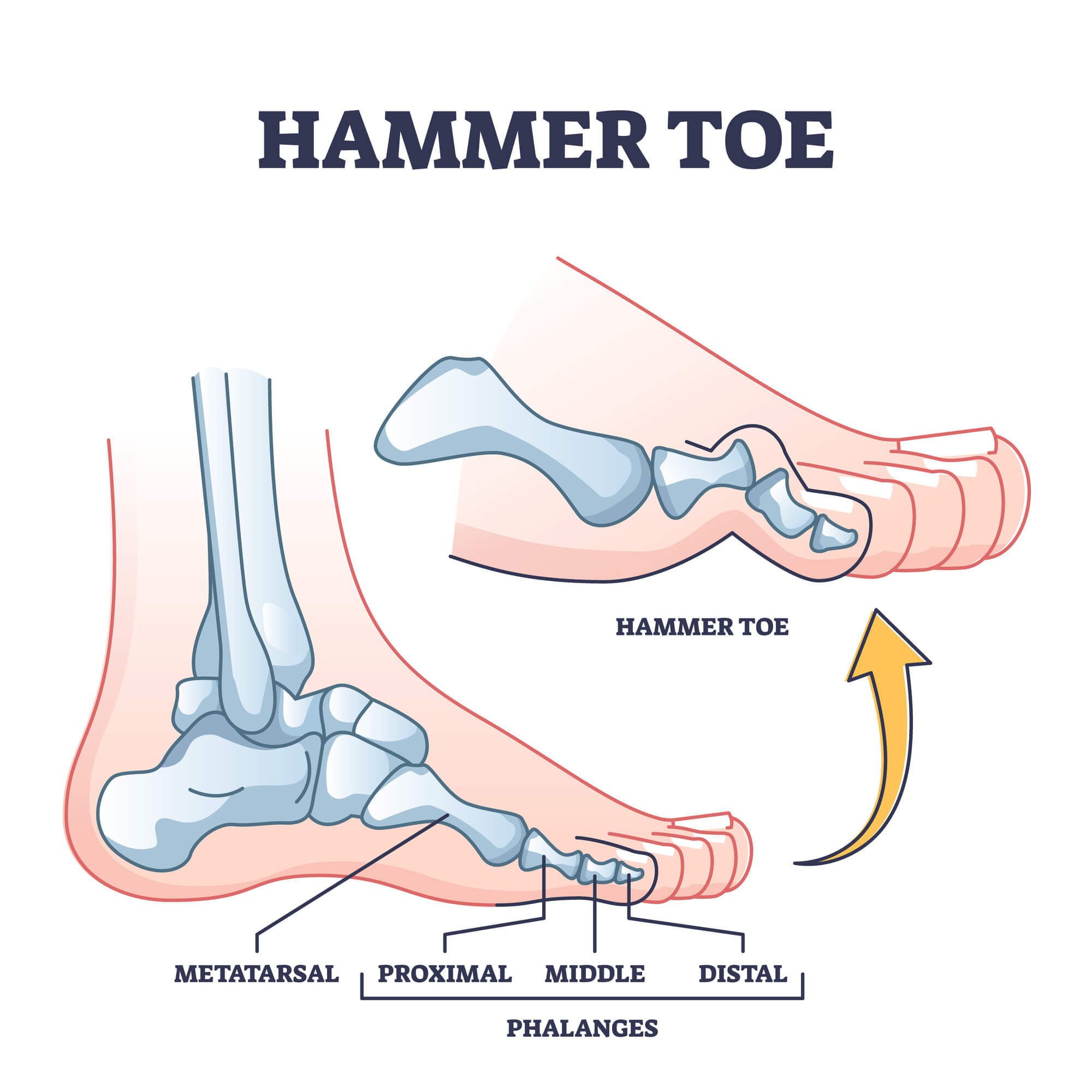
Definition of Claw Toes
A claw toe is similar to a hammertoe, but instead of bending downward at the middle joint, the toe points upward. This can cause the toes to overlap and lead to discomfort and the development of calluses.
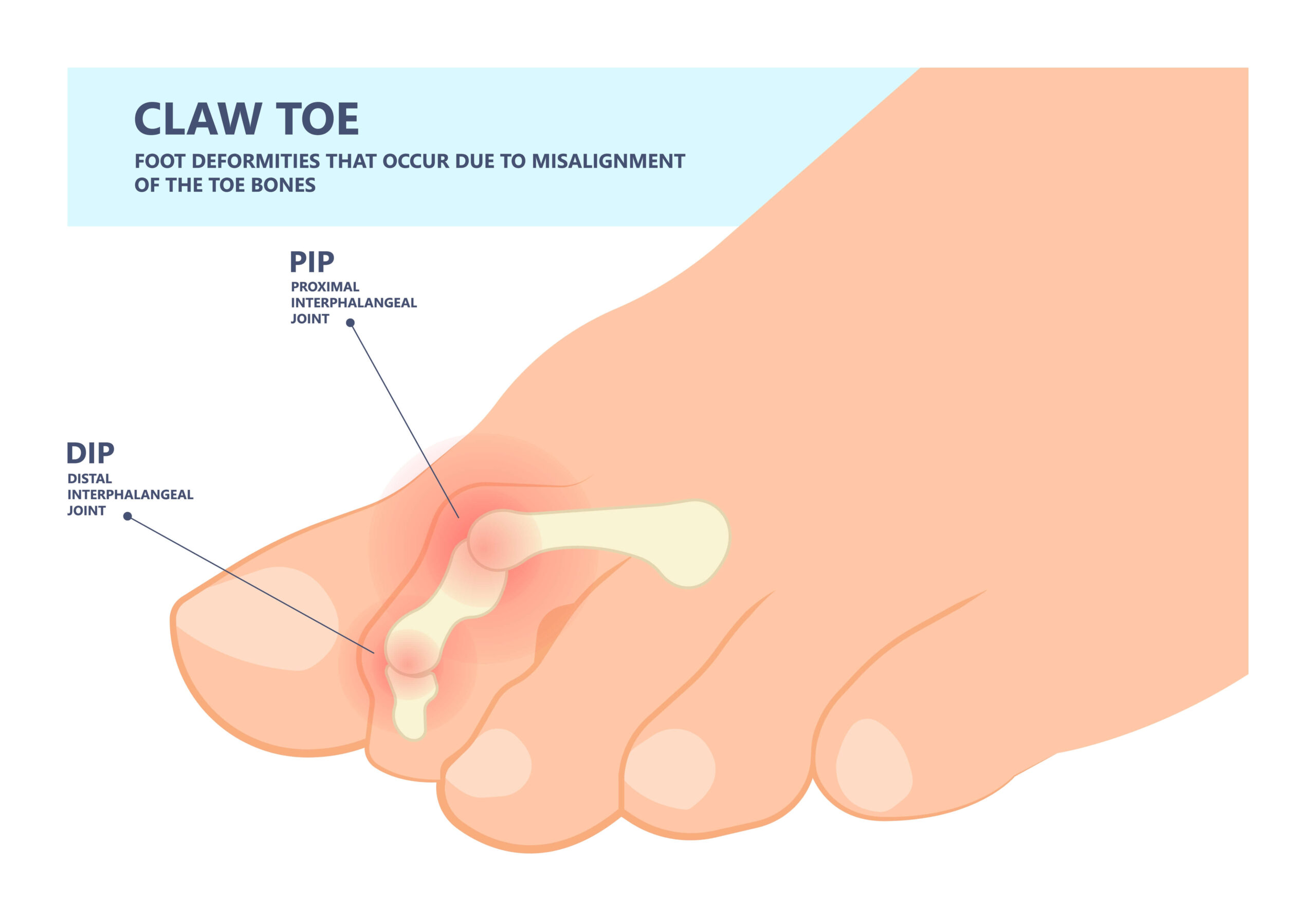
Causes of Hammertoes and Claw Toes
Common Causes of Hammertoes
Several factors can contribute to the development of hammertoes. These include:
- Wearing shoes that do not fit properly or that put pressure on the toes
- High heels that force the toes into a cramped position
- Foot injuries or conditions that affect the tendons, such as arthritis or a bunion
- Tight ligaments or muscles in the foot and ankle
- Age, as the muscles and ligaments in the foot, can weaken over time
Common Causes of Claw Toes
Like hammertoes, claw toes can be caused by shoes that do not fit properly or put pressure on the toes. Other factors that can contribute to the development of claw toes include:
- High arches or flat feet
- Neuropathy (nerve damage)
- Foot injuries or conditions that affect the tendons, such as arthritis or a bunion
- Tight ligaments or muscles in the foot and ankle
- Age, as the muscles and ligaments in the foot, can weaken over time

Symptoms of Hammertoes and Claw Toes
Symptoms of Hammertoes
If you have a hammertoe, you may experience the following symptoms:
- Pain or discomfort in the affected toe when wearing shoes
- The formation of a callus or corn on the top or side of the toe
- Difficulty moving the toe
- Swelling in the toe or foot
Symptoms of Claw Toes
If you have a claw toe, you may experience the following symptoms:
- Pain or discomfort in the affected toe when wearing shoes
- The formation of a callus or corn on the top or side of the toe
- Difficulty moving the toe
- Swelling in the toe or foot
- The toes pointing upward, causing them to overlap
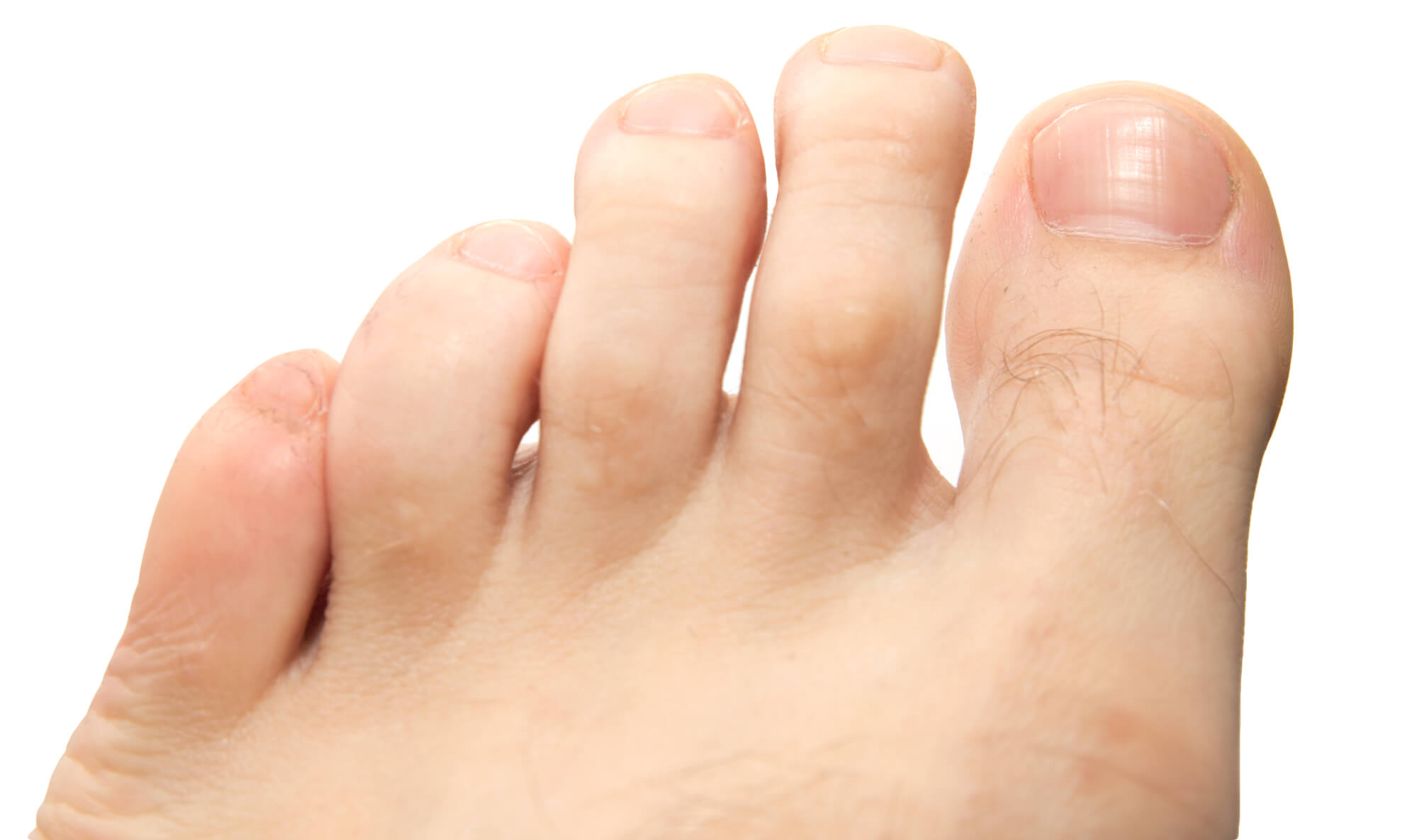
Treatment Options for Hammertoes and Claw Toes
Treatment Options for Hammertoes
If you are experiencing pain or discomfort due to a hammertoe, it is important to seek treatment to address the issue. Treatment options may include:
- Wearing shoes that have a wider toe box and a lower heel to reduce pressure on the toes
- Using orthotics or padding to alleviate pressure on the toes
- Exercising the toes and foot to stretch and strengthen the muscles
- Using over-the-counter pain medications to reduce inflammation and discomfort
- Seeking treatment from a podiatrist for more severe cases, which may include surgery to correct the deformity
Treatment Options for Claw Toes
Treatment options for claw toes may include:
- Wearing shoes that have a wider toe box and a lower heel to reduce pressure on the toes
- Using orthotics or padding to alleviate pressure on the toes
- Exercising the toes and foot to stretch and strengthen the muscles
- Using over-the-counter pain medications to reduce inflammation and discomfort
- Seeking treatment from a podiatrist for more severe cases, which may include surgery to correct the deformity
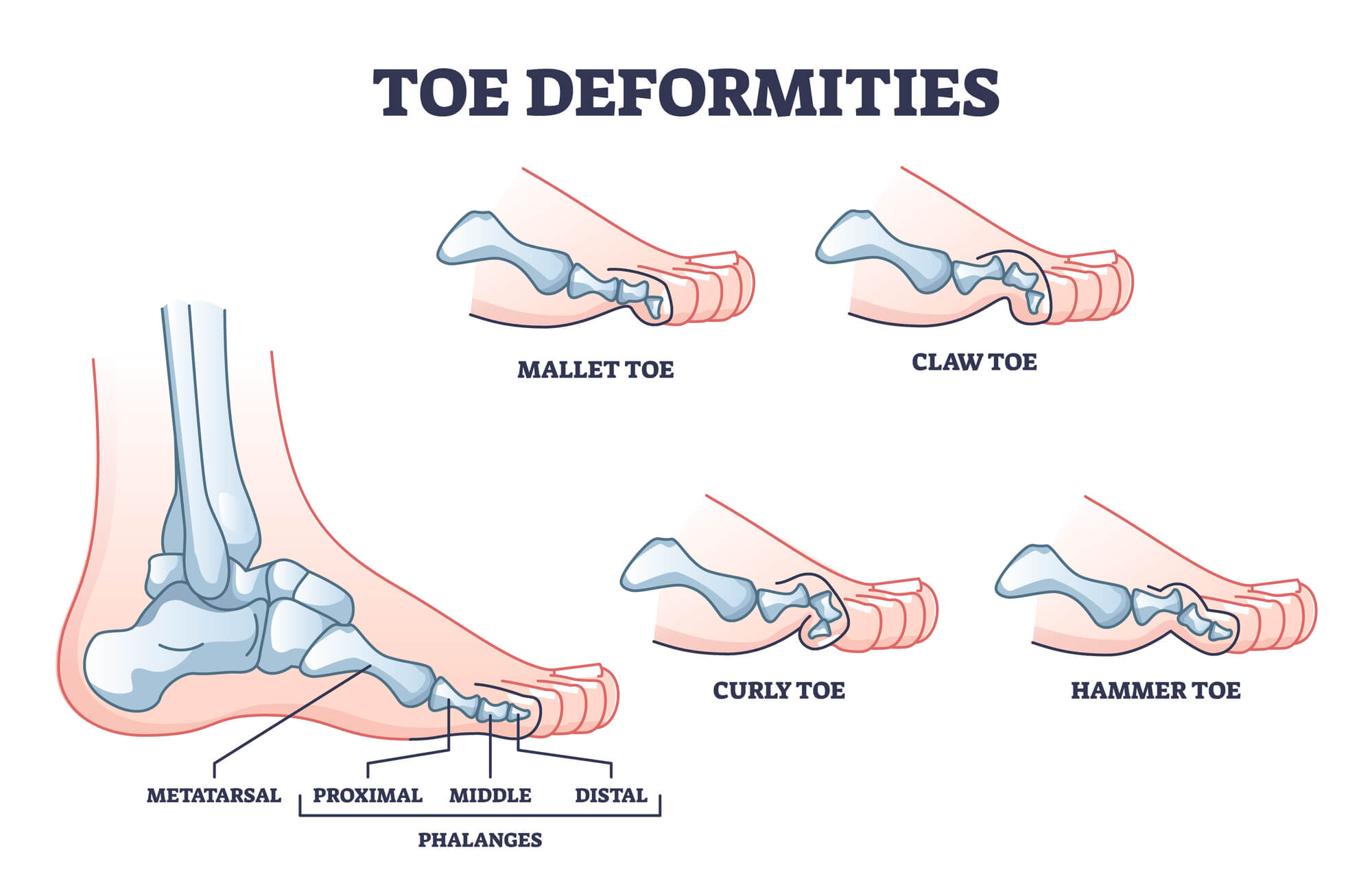
Preventing Hammertoes and Claw Toes
Preventing Hammertoes
To prevent hammertoes from developing or worsening, it is important to:
- Wear shoes that fit properly and do not put pressure on the toes
- Avoid high heels, as they can force the toes into a cramped position
- Stretch and exercise the feet and toes regularly to maintain flexibility
- Seek treatment for any foot injuries or conditions that may cause an imbalance in the muscles or tendons
Preventing Claw Toes
To prevent claw toes from developing or worsening, it is important to:
- Wear shoes that fit properly and do not put pressure on the toes
- Avoid high heels, as they can force the toes into a cramped position
- Stretch and exercise the feet and toes regularly to maintain flexibility
- Seek treatment for any foot injuries or conditions that may cause an imbalance in the muscles or tendons
Differences Between Hammertoes and Claw Toes
The main difference between hammertoes and claw toes is the direction in which the toe is bent. Hammertoes bend downward at the middle joint, while claw toes bend upward. This causes the toes to appear differently, leading to different symptoms and treatment options.
In addition, the causes of hammertoes and claw toes can differ. While both can be caused by wearing shoes that do not fit properly or put pressure on the toes, hammertoes may also be caused by foot injuries or conditions that affect the tendons, such as arthritis or a bunion. On the other hand, claw toes may be caused by high arches or flat feet, neuropathy, foot injuries, or conditions that affect the tendons.
It is important to note that both hammertoes and claw toes can cause pain and discomfort. It is advisable to seek treatment from a podiatrist to determine the specific cause and find an appropriate treatment plan. Overall, understanding the differences between hammertoes and claw toes can help you take the necessary steps to address the issue and maintain healthy, comfortable feet.
Conclusion
Hammertoes and claw toes are common foot conditions that cause pain and discomfort. It is important to understand the differences between the two and the causes, symptoms, and treatment options. You can keep your feet healthy and comfortable by preventing these conditions and seeking treatment when necessary. If you are experiencing pain or discomfort in your toes, you should consult a podiatrist to determine the cause and find an appropriate treatment plan.

